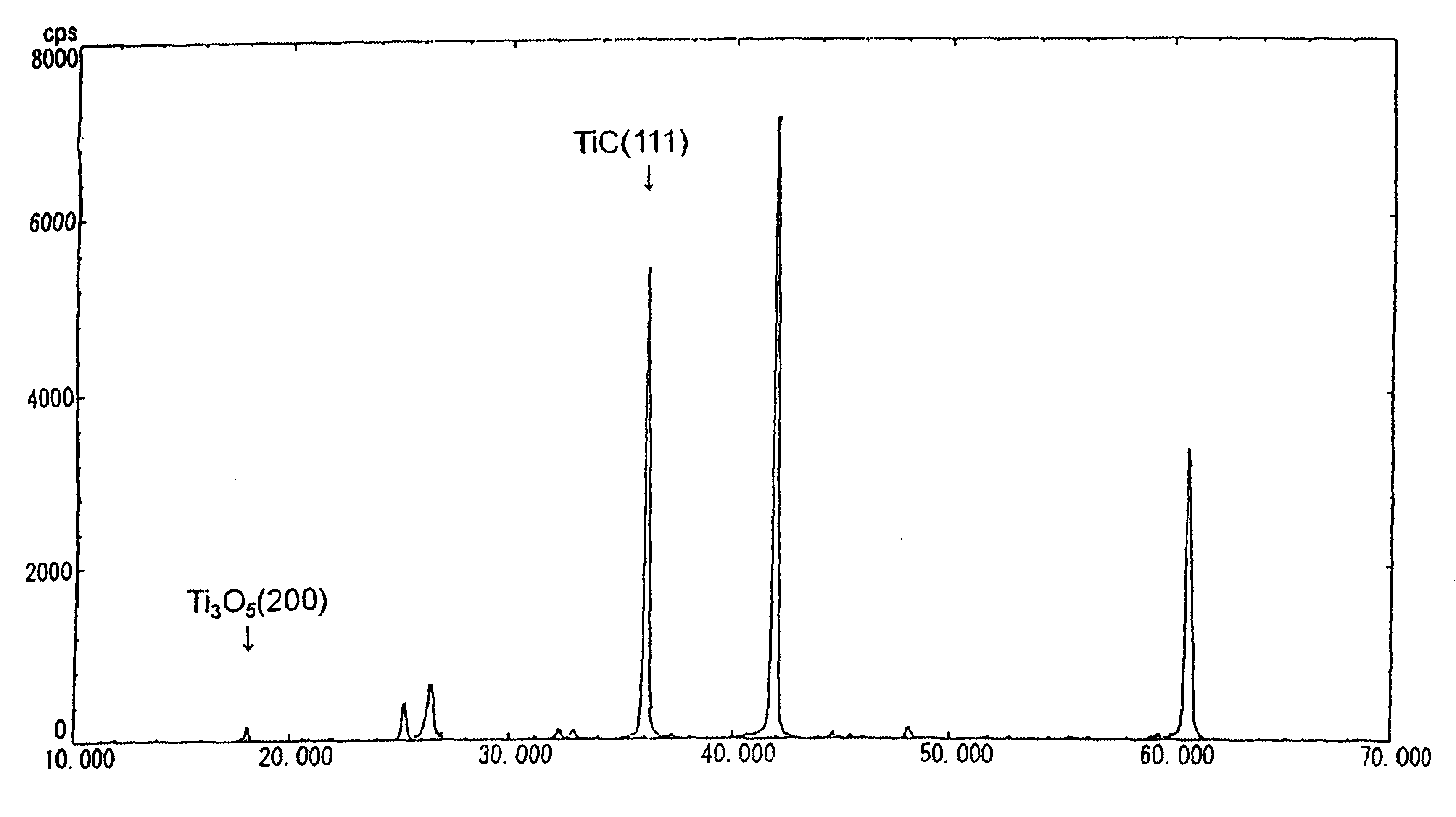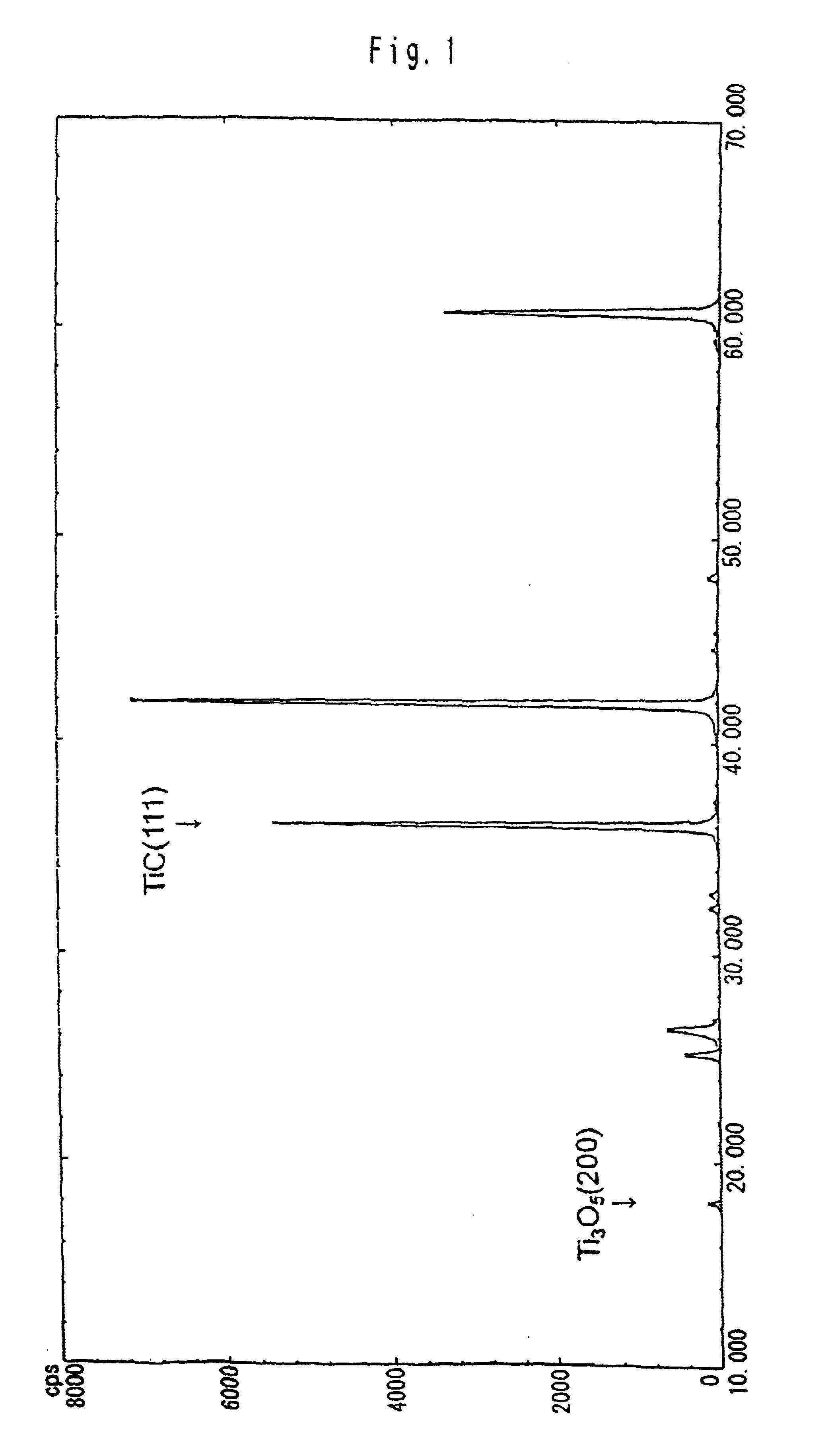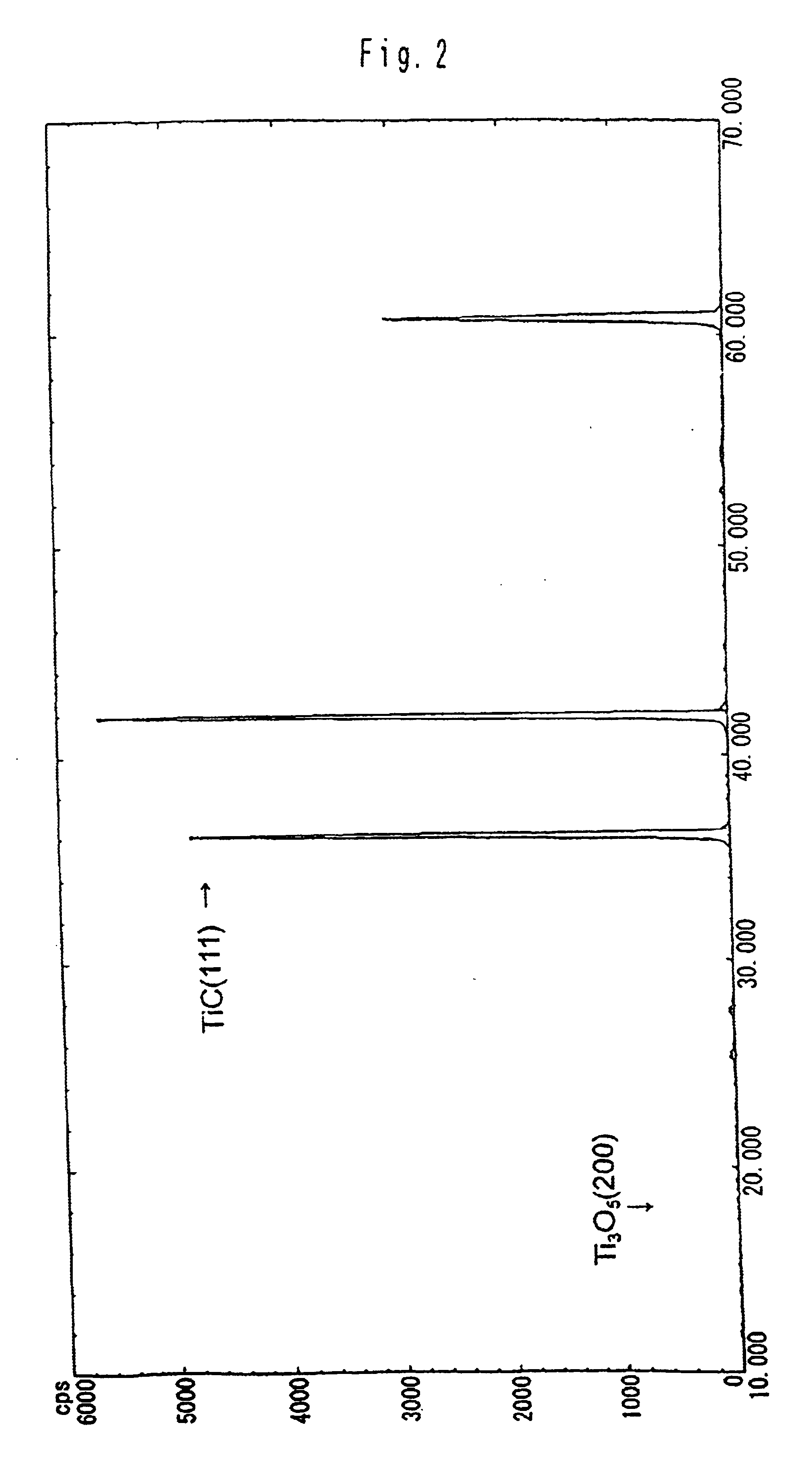Carbonaceous refractory and method for preparing the same
a technology of carbonaceous refractory and refractory material, which is applied in the field of refractory materials, can solve the problems of increasing the damage factor of lining refractory materials, carbonaceous refractory materials having a weak point, and carbonaceous refractory materials, so as to reduce the corrosion rate of refractory materials, reduce the corrosion resistance of pig, and improve the effect of corrosion resistan
- Summary
- Abstract
- Description
- Claims
- Application Information
AI Technical Summary
Benefits of technology
Problems solved by technology
Method used
Image
Examples
embodiment 1
Following the compositions shown in Table 1 and with the procedures described below, carbonaceous refractory materials of Sample 1—1 which contains titanium carbide and Samples 1-2 to 1-5 which do not contain titanium carbide were produced. The applied titanium carbide showed the X-ray diffraction peak intensity ratio as indicated in FIG. 2. The samples were baked in coke breeze. Then, the carbonaceous refractory materials of Sample 1-1 to 1-5 were immersed and rotated in the melt, which was composed of melted pig iron and slug, which floated above the pig iron, from a blast furnace, at 1550° C. for one hour. Thereafter, the samples were recovered, to examine the corrosion ratio at the melted pig iron-immersed portion and at the interface between melted pig iron and slug. Thermal conductivity of the samples was also measured.
Herein, the mold size for forming the carbonaceous refractory materials is of 600×600×2,500 mm, while the sample size for melted pig ir...
embodiment 2
itanium Carbide
Following the compositions shown in Table 2 and by the same procedures as in Embodiment 1, carbonaceous refractory materials of Samples 2-1 to 2-7 were prepared, while the blend ratio of Tic was varied within a range of 0 to 11 parts. The applied titanium carbide showed the X-ray diffraction peak intensity ratio as indicated in FIG. 2. The particle diameter of alumina was 2 to 3 μm, while the particle diameter of metallic silicon was below 74 μm. Herein, the TiC particle diameter is 7 μm, while the mold size for forming the carbonaceous refractory materials is of 100 Φ×130 mm and the sample size is 20Φ×70 mm.
The upper parts of these Samples 2-1 to 2-7 were protected with alumina sleeve, so that only the lower parts of the samples to be corroded. The volume reduction ratio of the lower parts between prior to and after the test was defined as melted pig iron corrosion ratio. Herein, the volume was measured by Hydrostatic Method. As the melted pig iron source, cast iron ...
embodiment 3
anium Compounds
By the same procedures as in Embodiment 1 and at the same blend ratio of Sample 2-7 shown in Table 2, carbonaceous refractory materials were produced, except the kinds of mixed Ti compounds, such as metal titanium, TiC, TiC0.7N0.3, TiC0.3N0.7 and TiN. The X-ray diffraction peak intensity ratio of the face (200) of the Ti3O5 to the face (111) of the titanium carbide is shown in Table 3. All the particle diameters of metallic titanium and the Ti compounds were 7 μm. The particle diameter of alumina was 2 to 3 μm, while the particle diameter of metallic silicon was 74 μm or less. Herein, the mold size for forming the carbonaceous refractory materials was of 100Φ×130 mm, while the sample size was 20Φ×70 mm.
With the same method as used above in the section [Embodiment 2. Content of titanium carbide], the corrosion ratio by melted pig iron was measured. The results are shown in Table 3.
TABLE 3Type of Ti compoundsTiCcon-2 typesTiTiCventionalTiC0.7N0.3TiC0.3N0.7TiNA2 types B2...
PUM
| Property | Measurement | Unit |
|---|---|---|
| Percent by mass | aaaaa | aaaaa |
| Percent by mass | aaaaa | aaaaa |
| Percent by mass | aaaaa | aaaaa |
Abstract
Description
Claims
Application Information
 Login to View More
Login to View More - R&D
- Intellectual Property
- Life Sciences
- Materials
- Tech Scout
- Unparalleled Data Quality
- Higher Quality Content
- 60% Fewer Hallucinations
Browse by: Latest US Patents, China's latest patents, Technical Efficacy Thesaurus, Application Domain, Technology Topic, Popular Technical Reports.
© 2025 PatSnap. All rights reserved.Legal|Privacy policy|Modern Slavery Act Transparency Statement|Sitemap|About US| Contact US: help@patsnap.com



